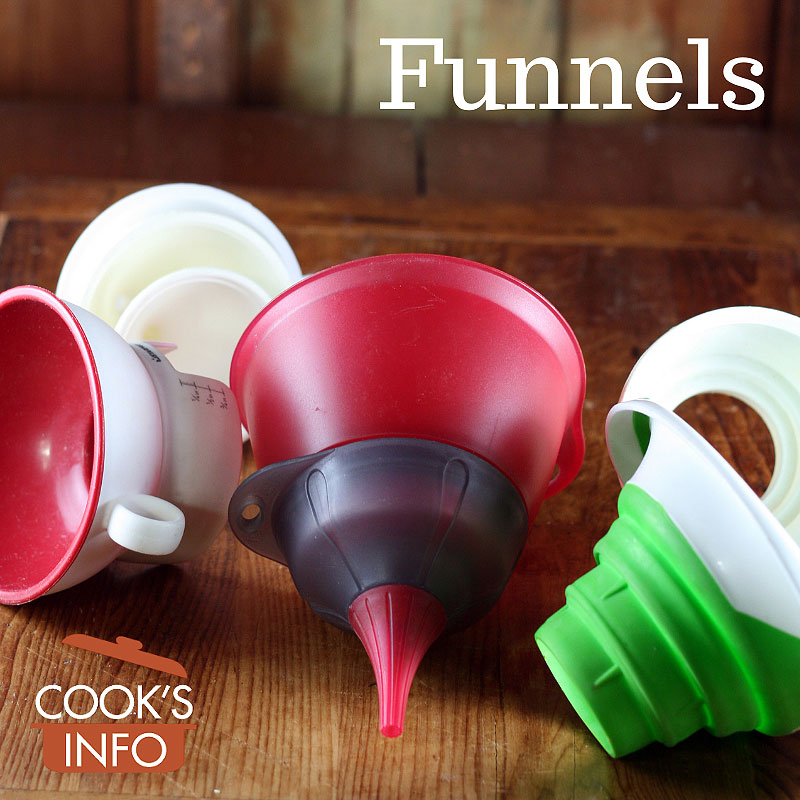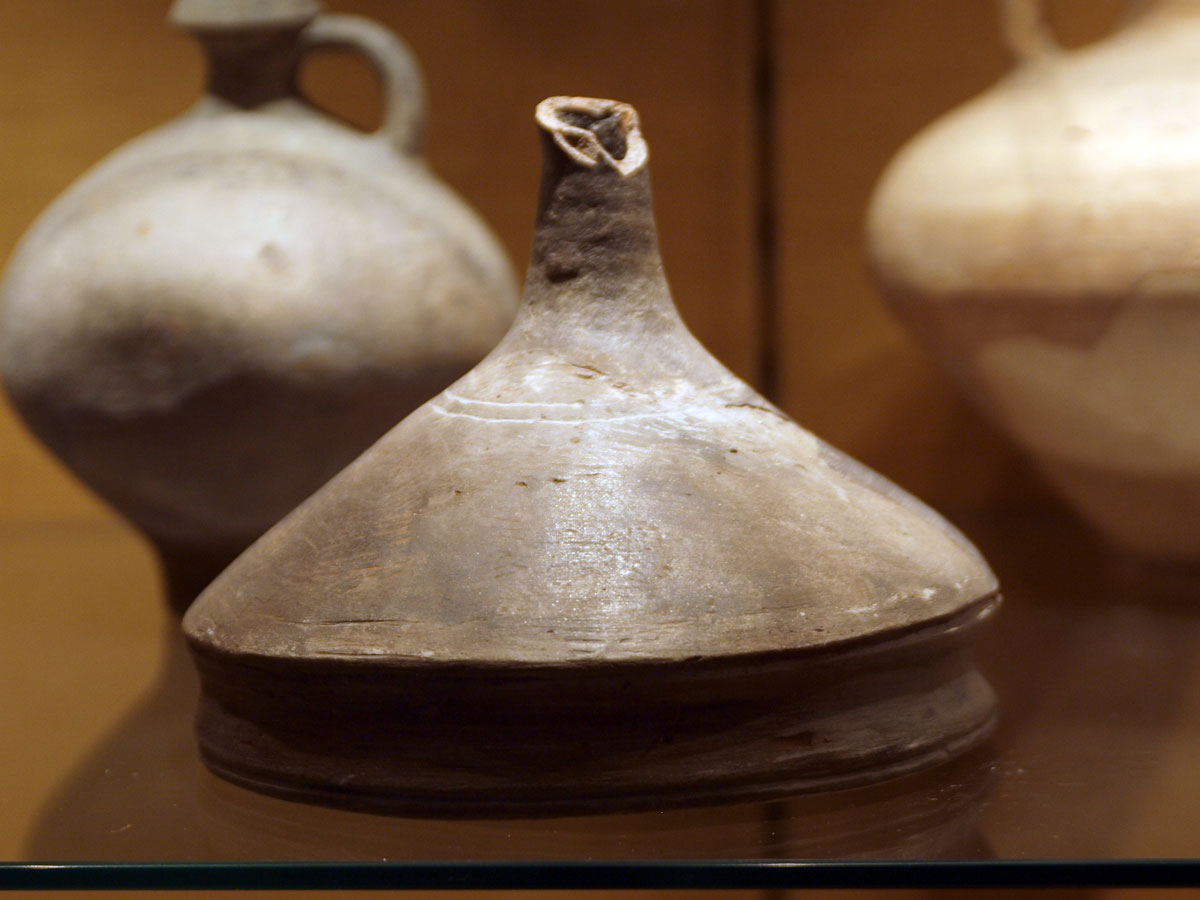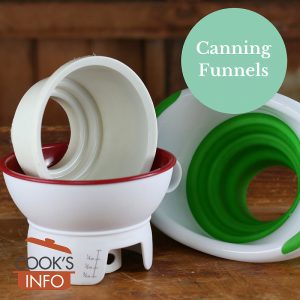
Funnels. © CooksInfo / 2018
A funnel is a cone with a hole at the bottom of it. A hollow tube (called a “neck”) is attached to it at the bottom where the hole is, so that stuff in the bowl of the cone will pass out through the hole and through the tube.
It is used to transfer food items into containers with narrow tops. The purpose of the funnel is to minimize spillage and wastage during transfer of the food item.
Various funnel designs and uses
Funnels can be used for liquids, or fine-particled items such as flour, peppercorns, spices and dried herbs,
Wide-mouthed ones are good for transferring dry goods and chunky goods; narrow-mouthed ones are good for liquids.
Some bowls may, instead of being cone-shaped, be like a flat-bottomed bowl.
Funnels designed for transferring preserves into preserve jars have very short, very wide funnel tubes, in order to fit snugly along the inside rims of preserving jars. They will also have very wide mouths.
Some funnels have filter plates that you can put over their bottom holes so that they will act as a strainer as well, for items such as frying oil. Decanting funnels often also have straining screens that you insert into them to strain out sediment. These usually have a wide, bowl-shaped cone, with a half-hooped handle on their side.
Funnels can be made of a metal such as stainless steel, or made of plastic or silicone. Not all metal ones may be dishwasher safe. Plastic ones have the advantage in that you can squeeze them to hurry things along, but you can achieve the same effect with metal ones by jiggling or shaking them.
Some people use metal ones to bake cake boobs to put on figurine cakes.
Funnels are also great for children’s water-play centres.
Cooking Tips
You rest the funnel, tube side down, into the open orifice, and start pouring your food item through slowly.
Substitutes
You can make a make-shift funnel out of tin foil, by doubling it up, and securing the joint. Or, a make-shift funnel out of waxed or parchment paper will do the trick for dry goods.
History Notes
Cooks have used funnels since at least Roman times.
Torture techniques developed during the Albigensian Inquisition involved a form of funnel torture called the “toca”, in which a funnel made with cloth was put in the victim’s mouth and water continually flowed into his or her mouth.

A Roman kitchen funnel with broken tip. Found at Saalburg near Bad Homburg vor der Höhe, Hesse, Germany. Dated to ca. 1st to 3rd century AD. Andreas Franzkowiak / wikimedia / 2009 / CC BY-SA 3.0


